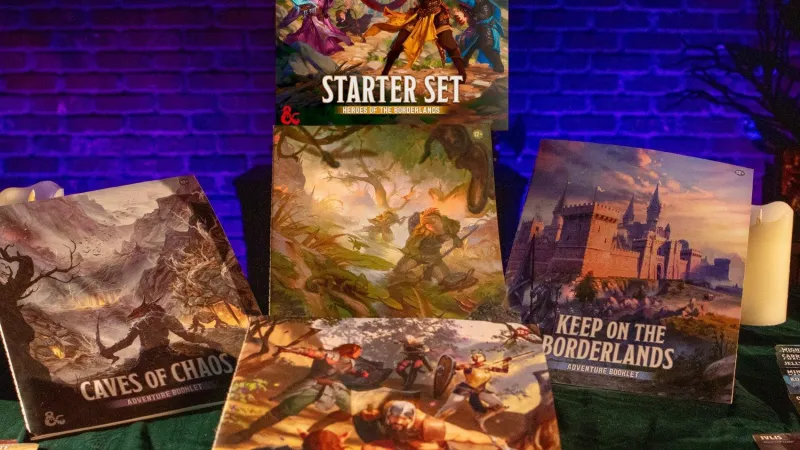Despite its unparalleled popularity in tabletop roleplaying, Dungeons & Dragons can definitely be a challenge for beginners. There are so many elements to figure out, and if you're playing analog, there just isn't enough room to do it on a standard character sheet. Dungeons & Dragons has released 5th Edition starter sets and essential kits in the past, but the latest edition, Heroes of the Borderlands, is the most accessible version yet. It offers a simplified version of the game, packed with physical elements such as cards and tokens that make the game easier to understand. After picking up a copy to check it out for myself, I was impressed with how everything came together and would easily recommend it as an introductory book to anyone who wants to try this hobby. First, an important disclaimer: I have never played this adventure, other than a brief session at Gen Con earlier this year. As such, my thoughts are based on my independent analysis and reading of the box and its contents, as well as comparisons to past sets. The most direct difference between Heroes of the Borderlands and similar D&D box sets is their weight. The newest starter set, Dragons of Stormwreck Isle, weighs about 1.2 pounds and includes only a few character sheets, two booklets, and a set of dice. My Heroes of the Borderlands, on the other hand, weighs a whopping 5 pounds. Packed with character class boards, spell, monster, and weapon cards, player and enemy tokens, and nine double-sided maps. The latter game is more expensive ($49.99 instead of $19.99), but you get that price point on material costs alone. Of course, D&D doesn't require most of the above materials, but they can be very useful in bringing new players into the fold. The pre-made character class boards are easy to read and leveling up is as easy as flipping one side over. There's also a blank space dedicated to cards and tokens representing weapons, spells, and hit points, so you don't even need a pencil, making it a little easier to visualize all the details you need for your character's movements. Most importantly, it reduces the amount of knowledge players need to have before starting the game. As long as you have the right cards and tokens on the board, the bright color-coded design will guide you well once you start playing. DM tools are equally useful. I always hate flipping to the back of a book to look up monster stats and copying details into notes. The purpose of modules is to take some of the prep work out of the DM's hands, and adventure books do just that. Each room or encounter begins with a description of what to expect, including the names of the characters and a brief overview of their relationships, as well as a list of required materials, such as tokens, cards, maps, and other handouts. One of the biggest criticisms of D&D is the workload it puts on the DM compared to other players. Some are tasked with keeping track of the world and all its details, both narrative and mechanical, while others can focus on their own immersion. A tactile, structured, information-first approach to introducing people to the DM role is a big step in the right direction, so much so that I hope to someday introduce it in higher-level modules. Ideally, role-playing games are played in a state of flow, where mechanics become the tools everyone uses to fluidly tell a collective story. The biggest hurdle for new players is fully understanding the mechanics to transform it from an obstacle to a launching pad, but by using so many tactile tools to sand away some of that barrier to entry, it's easier than ever to get into the game.
Subscribe to Updates
Subscribe to our newsletter and stay updated with the latest news and exclusive offers.

